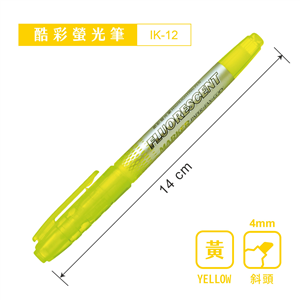



歷史是人類文明承傳的紀錄。學習歷史不但可以鑑古知今,還可以提高我們對人文活動的認識和關懷。香港現在的歷史教育把中國歷史和世界歷史劃分為兩個互不統屬的科目,但世界上沒有一個國家是完全孤立的,它的歷史也不可能不受到其他地區的影響。因此,我們應全面地看它們的關係和發展的過程。 本書以中國為經、世界其他地區為緯,嘗試把人類錯綜複雜的歷史整合起來,構成一幅比較完整的圖畫,讓讀者看到先祖的起源和人類的發展。全書記述的歷史跨度宏大全面,從史前到現代,從中國到世界,從人類文明的起源到朝代的興替,是一本普及版世界歷史書籍。
本書特別適合中學生、大學生及對中外歷史有興趣的讀者閱讀。
作者簡介:
馮以浤,香港大學文學士及教育碩士學位。曾任拔萃男書院運動主任、香港大學明原堂舍監兼教育系講師、香港中文大學教育學院高級講師兼課程與教學系主任。退休後,嘗任香港中文大學榮譽副教授。馮先生從事教育工作多年,專研地理教育、課外活動和學生運動,對中學的中國語文和中國歷史教學工作也有豐富的經驗和一定的心得。近年著作有To Serve and To Lead: A History of the Diocesan Boys’ School, Hong Kong(與陳慕華合著)、《立足神州看世界:人類文明簡史》、《小河淌水:退休教師憶流年》等,譯著包括《胸肺疾病手冊》、《林護:孫中山背後的香港建築商》等。
Author
FUNG Yee Wang, received his B.A. and M.A. from the University of Hong Kong. His work experience and positions held include Sportsmaster at DBS, Warden of Old Halls and Part-time Lecturer in Education at HKU, and Senior Lecturer and Head of the Curriculum and Instruction Department at CUHK. He had been appointed Hon. Associate Professor of the Faculty of Education by CUHK after retirement. Mr. Fung is an experienced educator, specializing in geographical education, student activities and student activism. He is also well versed in the teaching of Chinese language and Chinese History in secondary school. His recent publications include: To Serve and To Lead: A History of the Diocesan Boys’ School, Hong Kong (in collaboration with Chan-Yeung Mo Wah Moira); China and the World; The Rippling Stream: Memoir of a Retired Teacher; A Handbook of Lung Diseases and Lam Woo: Master Builder, Revolutionary, and Philanthropist; the last two being translations from English to Chinese.
譯者簡介:
張曼儀,香港大學文學士、美國哥倫比亞大學文學碩士、英國華威大學翻譯學博士,現任香港大學中文學院榮譽副教授。自1967年起在香港大學任教翻譯及現當代文學近三十年。著有《卞之琳著譯研究》、《翻譯十談》等。其英譯著作包括The Carving of Insects(合譯,獲美國筆會2007年度翻譯獎)、The First and Second Buddhist Councils: Five Versions(合譯)、A Full Load of Moonlight: Chinese Chan Buddhist Poems(合譯)、Xu Zhimo: Selected Poems(合譯)等。
Translator
Mary M. Y. FUNG, Hon. Associate Professor at the School of Chinese, the University of Hong Kong, received her B.A. (Hons.) from the University of Hong Kong, her M.A. from Columbia University, and her Ph.D. in Translation Studies from the University of Warwick. She taught Translation and Twentieth Century Chinese Literature at the University of Hong Kong since 1967 for thirty years. Her publications in Chinese include A Study of Bian Zhilin’s Poetry and Translations and Ten Talks on Translation. Her translated works from Chinese to English include The Carving of Insects (awarded the 2007 PEN USA Translation Prize); The First and Second Buddhist Councils: Five Versions; A Full Load of Moonlight: Chinese Chan Buddhist Poems; and Xu Zhimo: Selected Poems; all co-authored.
退換貨說明:
會員均享有10天的商品猶豫期(含例假日)。若您欲辦理退換貨,請於取得該商品10日內寄回。
辦理退換貨時,請保持商品全新狀態與完整包裝(商品本身、贈品、贈票、附件、內外包裝、保證書、隨貨文件等)一併寄回。若退回商品無法回復原狀者,可能影響退換貨權利之行使或須負擔部分費用。
訂購本商品前請務必詳閱退換貨原則。作者:馮以浤
 1收藏
1收藏

 1二手徵求有驚喜
1二手徵求有驚喜
優惠價: 93 折, NT$ 791 NT$ 850
限量商品已售完
歷史是人類文明承傳的紀錄。學習歷史不但可以鑑古知今,還可以提高我們對人文活動的認識和關懷。香港現在的歷史教育把中國歷史和世界歷史劃分為兩個互不統屬的科目,但世界上沒有一個國家是完全孤立的,它的歷史也不可能不受到其他地區的影響。因此,我們應全面地看它們的關係和發展的過程。 本書以中國為經、世界其他地區為緯,嘗試把人類錯綜複雜的歷史整合起來,構成一幅比較完整的圖畫,讓讀者看到先祖的起源和人類的發展。全書記述的歷史跨度宏大全面,從史前到現代,從中國到世界,從人類文明的起源到朝代的興替,是一本普及版世界歷史書籍。
本書特別適合中學生、大學生及對中外歷史有興趣的讀者閱讀。
作者簡介:
馮以浤,香港大學文學士及教育碩士學位。曾任拔萃男書院運動主任、香港大學明原堂舍監兼教育系講師、香港中文大學教育學院高級講師兼課程與教學系主任。退休後,嘗任香港中文大學榮譽副教授。馮先生從事教育工作多年,專研地理教育、課外活動和學生運動,對中學的中國語文和中國歷史教學工作也有豐富的經驗和一定的心得。近年著作有To Serve and To Lead: A History of the Diocesan Boys’ School, Hong Kong(與陳慕華合著)、《立足神州看世界:人類文明簡史》、《小河淌水:退休教師憶流年》等,譯著包括《胸肺疾病手冊》、《林護:孫中山背後的香港建築商》等。
Author
FUNG Yee Wang, received his B.A. and M.A. from the University of Hong Kong. His work experience and positions held include Sportsmaster at DBS, Warden of Old Halls and Part-time Lecturer in Education at HKU, and Senior Lecturer and Head of the Curriculum and Instruction Department at CUHK. He had been appointed Hon. Associate Professor of the Faculty of Education by CUHK after retirement. Mr. Fung is an experienced educator, specializing in geographical education, student activities and student activism. He is also well versed in the teaching of Chinese language and Chinese History in secondary school. His recent publications include: To Serve and To Lead: A History of the Diocesan Boys’ School, Hong Kong (in collaboration with Chan-Yeung Mo Wah Moira); China and the World; The Rippling Stream: Memoir of a Retired Teacher; A Handbook of Lung Diseases and Lam Woo: Master Builder, Revolutionary, and Philanthropist; the last two being translations from English to Chinese.
譯者簡介:
張曼儀,香港大學文學士、美國哥倫比亞大學文學碩士、英國華威大學翻譯學博士,現任香港大學中文學院榮譽副教授。自1967年起在香港大學任教翻譯及現當代文學近三十年。著有《卞之琳著譯研究》、《翻譯十談》等。其英譯著作包括The Carving of Insects(合譯,獲美國筆會2007年度翻譯獎)、The First and Second Buddhist Councils: Five Versions(合譯)、A Full Load of Moonlight: Chinese Chan Buddhist Poems(合譯)、Xu Zhimo: Selected Poems(合譯)等。
Translator
Mary M. Y. FUNG, Hon. Associate Professor at the School of Chinese, the University of Hong Kong, received her B.A. (Hons.) from the University of Hong Kong, her M.A. from Columbia University, and her Ph.D. in Translation Studies from the University of Warwick. She taught Translation and Twentieth Century Chinese Literature at the University of Hong Kong since 1967 for thirty years. Her publications in Chinese include A Study of Bian Zhilin’s Poetry and Translations and Ten Talks on Translation. Her translated works from Chinese to English include The Carving of Insects (awarded the 2007 PEN USA Translation Prize); The First and Second Buddhist Councils: Five Versions; A Full Load of Moonlight: Chinese Chan Buddhist Poems; and Xu Zhimo: Selected Poems; all co-authored.
退換貨說明:
會員均享有10天的商品猶豫期(含例假日)。若您欲辦理退換貨,請於取得該商品10日內寄回。
辦理退換貨時,請保持商品全新狀態與完整包裝(商品本身、贈品、贈票、附件、內外包裝、保證書、隨貨文件等)一併寄回。若退回商品無法回復原狀者,可能影響退換貨權利之行使或須負擔部分費用。
訂購本商品前請務必詳閱退換貨原則。
※ 二手徵求後,有綁定line通知的讀者,
該二手書結帳減5元。(減5元可累加)
請在手機上開啟Line應用程式,點選搜尋欄位旁的掃描圖示
即可掃描此ORcode
|
||||||||||||||||||
|
||||||||||||||||||
|
||||||||||||||||||













